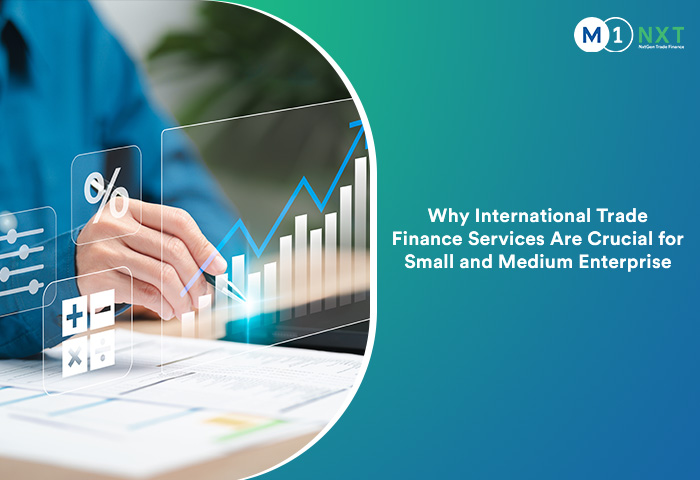The Future of Trade Finance: Trends & Innovations in 2025
 |
Rapid technical breakthroughs,
shifting geopolitical dynamics, and changing economic policies position the trade finance sector for major changes as
the year begins.
It is undergoing a sea change, shifting from antiquated techniques to safer,
more effective, and ecologically responsible ones. As economies throughout the
world continue to bounce back from previous setbacks and confront new obstacles
like trade conflicts, shifting regulations, and escalating environmental
concerns, this transition is essential. This blog explores the key trends and
innovations shaping trade finance in 2025.
Regional Growth: With more economic activity, emerging markets
are anticipated to take the lead. Higher growth rates are anticipated in Asia
in particular as a result of increased intra-regional trade and the substantial
digital transformation of trade finance. On the other hand, as they navigate
through ongoing inflationary pressures and intricate trade discussions,
developed nations like Europe may experience weaker growth.
Implementation of
Technological Solutions: Businesses
are embracing technology in response to customer demands for quicker and more
transparent services, in addition to the operational advantages it offers. Due
to their capacity to produce transparent and safe transaction records, which
lower the likelihood of disputes and streamline reconciliation procedures,
technologies like blockchain are becoming more widely used.
Growth of digital
platforms: There is an increasing number of
platforms that enable digital trade financing. From starting transactions to
completing agreements, these systems provide comprehensive solutions for
managing trade finance processes. By making trade financing more accessible,
the use of such platforms is anticipated to boost productivity, save expenses,
and provide new opportunities for companies of all sizes.
AI, Blockchain,
and IoT in Trade Finance:
Artificial intelligence (AI), blockchain, and the Internet of Things (IoT) are
driving major advancements in trade finance. AI enhances risk assessment and
decision-making by analyzing large volumes of data to predict consumer and
market trends, leading to more informed lending decisions. Simultaneously,
blockchain is being explored to establish decentralized frameworks that can
accelerate transactions and reduce reliance on intermediaries. IoT contributes
by providing real-time shipment tracking and monitoring, which minimizes risks
associated with the physical movement of goods. Together, these technologies
are transforming the efficiency, security, and intelligence of trade finance
operations.
Concerns about cybersecurity: As the number of digital transactions
rises, cybersecurity has emerged as a major issue in trade finance. Businesses
are making significant investments to protect their digital platforms from a
growing array of cyberthreats. Advanced encryption methods, two-factor
authentication, and ongoing transaction activity monitoring are examples of
preventative measures that help stop fraud and data breaches.
Trade Policies with a Climate
Focus: International organisations and governments are including
sustainability into trade agreements. Incentives for adopting eco-friendly
technology and sanctions for breaking green standards are common features of
these strategies. These policies seek to stimulate green investment and the
trade of sustainable goods.
Reshoring and
friend-shoring: Many governments
and businesses are trying to stabilise their supply chains by moving them
closer to home or to more politically stable countries in reaction to the
disturbances that occurred in the past few years. By broadening commercial
relationships and lowering reliance on areas vulnerable to political unrest,
the friend-shoring strategy seeks to reduce risks.
Trade agreements and tariffs: As nations look to strengthen their
economic ties and safeguard their supply chains, new and renegotiated trade
agreements are probably going to be formed. In line with larger economic and
social agendas, these accords are anticipated to place a greater emphasis on
digital commerce and sustainability provisions.
So, here are the trends and
innovations in 2025 that have been changing the international trade finance sector.
As mentioned earlier, one of the
things that is impacting this domain is digital platforms. One such platform is
a trade finance platform that is
designed to manage the process related to trade finance.
M1 NXT is one of the known trade
finance platforms. It is a IFSCA-regulated digital platform that is positioned
as a frontrunner in the evolving landscape of global trade finance.
M1 NXT operates entirely online,
offering a streamlined and accessible experience. This digital nature allows
for efficiency, speed, and global reach. It is not just an incremental
improvement; it aims to fundamentally change how businesses engage with international
trade finance. The platform is specifically designed to cater to the needs of
businesses involved in global trade, particularly in areas like factoring.
It is built to adapt to the changing
demands of the global market. This future-proof approach ensures that
businesses using the platform remain competitive.
Conclusion
As per this blog post, the trade
finance industry is being influenced by sustainability, new technology, changes
in geopolitics, and the list goes on.
M1 NXT, a leading IFSCA-regulated
digital trade finance platform, revolutionises global trade, particularly
factoring, for businesses. Its online, future-proof design ensures efficiency,
speed, and competitiveness in the evolving global market.


Comments
Post a Comment